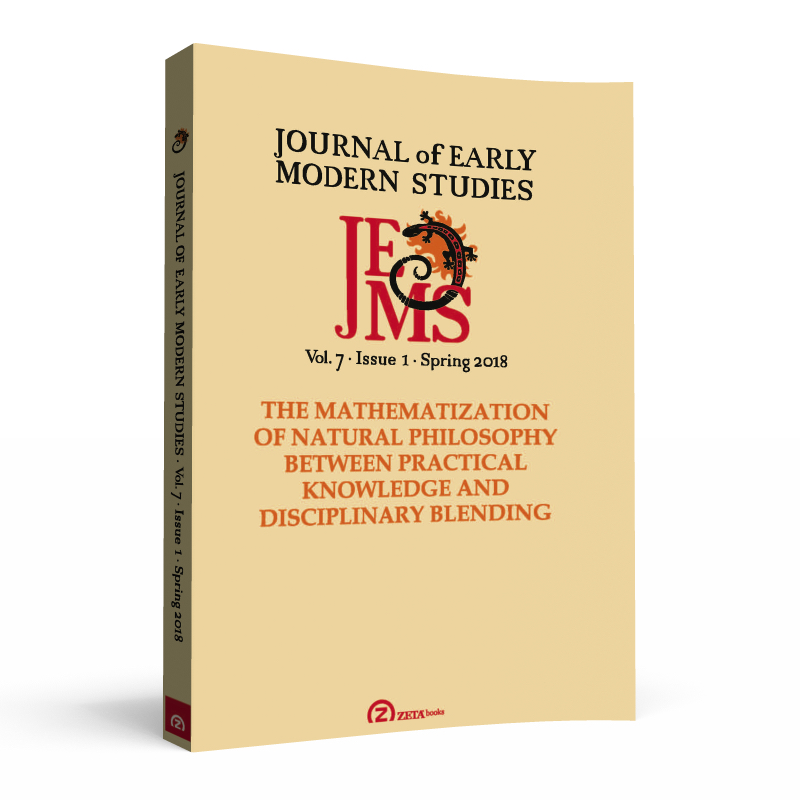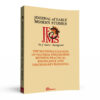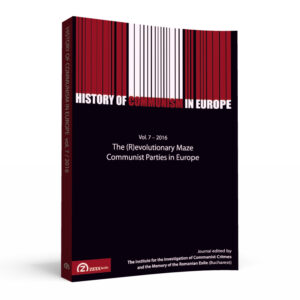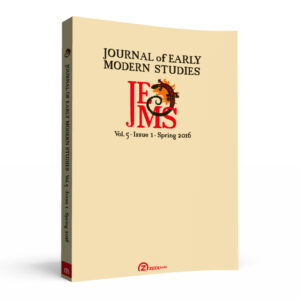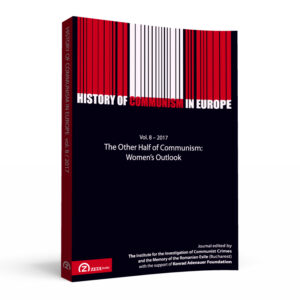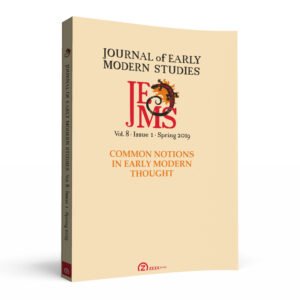TABLE OF CONTENTS
Dana Jalobeanu, Grigore Vida: Introduction
ARTICLES
Laura Georgescu: Rotating Poles, Shifting Angles and the Use of Geometry (Bond’s Longitude Found and Hobbes’ Confutation)
- Abstract: In The Sea-Mans Kalendar (1636 [1638?]), Henry Bond predicted that magnetic declination would be 0° in 1657, and would then increase westerly for (at least) 30 years. Based on these predictions, Bond went on to claim, in The Longitude Found (1676) that, by using his model of magnetism, he can offer a technique for determining longitude. This paper offers an assessment of Bond’s method for longitude determination and critically evaluates Thomas Hobbes’s so-far neglected response to Bond’s proposal in Decameron physiologicum (1678), in which Hobbes complains about what he takes to be Bond’s implicit natural philosophy and about his use of spherical trigonometry.
Adam D. Richter: “Nature Doth Not Work by Election”: John Wallis, Robert Grosseteste, and the Mathematical Laws of Nature
- Abstract: Though he is known primarily for his mathematics, John Wallis (1616–1703) was also a prominent natural philosopher and experimentalist. Like many experimental philosophers, including his colleagues in the Royal Society, Wallis sought to identify the mathematical laws that govern natural phenomena. However, I argue that Wallis’s particular understanding of the laws of nature was informed by his reading of a thirteenth–century optical treatise by Robert Grosseteste, De lineis, angulis et figuris, which expresses the principle that “Nature doth not work by Election.” Wallis’s use of this principle in his Discourse of Gravity and Gravitation (1675) helps to clarify his understanding of natural laws. According to Wallis, since nature cannot choose to act one way or another, natural phenomena are unfailingly regular, and it is this that allows them to be predicted, generalized, and described by mathematical rules. Furthermore, I argue that Wallis’s reading of Grosseteste reveals one way that medieval scholarship contributed to the “mathematization of nature” in the early modern period: historically–minded scholars like Wallis found insightful philosophical principles in medieval sources, and they transformed and redeployed these principles to suit the needs of early modern natural philosophy.
Fabrizio Bigotti: The Weight of the Air: Santorio’s Thermometers and the Early History of Medical Quantification Reconsidered
- Abstract: The early history of thermometry is most commonly described as the result of a continuous development rather than the product of a single brilliant mind, and yet scholars have often credited the Italian physician Santorio Santori (1561–1636) with the invention of the first thermometer. There are good reasons for this. It was indeed Santorio who first applied a graded scale behind the thermoscope allowing it to measure the temperature of both the air and the body. To this end, he set the parameters of the instrument, by measuring the minimum and maximum temperature in terms of change in the water level, obtained by exposing the glass bulb to candle fire and snow. Experimentally, Santorio understood the need to take measurements within constant periods of time, which he did by means of his pendulum regulated devices, called pulsilogia. Finally, the invention of the thermometer follows Santorio’s programme of quantification of the physiological parameters of the human body which started approximately in the 1580s and is reflected in the invention of similar other devices (scales, pulsilogia, hygrometers). Although generally known in outline, this story lacks many and significant details. The purpose of using such instruments within the traditional context of Galenic medicine has not been investigated and scholars have consistently assumed that, being subject to the influence of atmospheric pressure and environmental heat, Santorio’s instruments provided unreliable measurements. The discovery that, as early as 1612, Santorio describes all vacuum-related phenomena as effects of the atmospheric pressure of the air, provides ample room for reconsidering his role in the development of precision instruments and the early history of thermometry in particular. By drawing on a variety of written and visual sources, some unpublished, in this article I argue that Santorio’s appreciation of phenomena related to weight of the air resulted in the construction of the first thermometers which worked as sealed devices. In the final part, I also consider Santorio’s use of the thermometer as related to seventeenth-century medical practice and his way to measure the temperature as based on a wide sample of individuals.
Grigore Vida: Descartes’ Theory of Abstraction in the Regulæ
- Abstract: I analyze in this article the different ways in which Descartes uses abstraction in the Regulæ, discussing his project of a mathematical physics, the role of the imagination, and the status of numbers. I also try to show that the doctrine of simple natures cannot be well accommodated with the theory of abstraction developed in Rule 14, having instead a greater affinity with Descartes’ later theory of abstraction and exclusion (from the period after the Meditationes), in which imagination plays no role and everything happens at a strictly intellectual level. This interpretation is supported by the recent discovery of the Cambridge manuscript, which almost certainly records an early stage of composition and in which the doctrine of simple natures is absent, thus being very probably a later development.
Ovidiu Babeș: Descartes and Roberval: The Composite Pendulum and its Center of Agitation
- Abstract: This paper deals with Descartes’s and Roberval’s attempts to devise and describe the center of agitation of a composite pendulum. This episode has received some attention in the recent literature. It is usually depicted as the first step in the development of a general procedure for establishing the center of oscillation of a pendulum. My aim is to explore the different physical concepts and assumptions which informed the two mathematical accounts of the composite pendulum. I will argue that force, agitation, heaviness, or resistance of air essentially meant different things for Descartes and Roberval. As a result, the physical phenomena covered by the two geometrical procedures were quite distinct, and both mathematicians envisaged different roles of these phenomena within their agenda of studying nature.
Aaron Spink: Claude Gadroys and a Cartesian Astrology
- Abstract: When Descartes made his scientific work public he ushered in a worldview based almost entirely on mechanical motion, which brought along a complete rejection of “occult” forces. Thus, the foundation of astrology was equally rejected by many prominent Cartesians. However, the popularity of Descartes’ system lead to its rapid adoption by many subjects, astrology included. Here, I will take a look at the curious case of Claude Gadroys, whose primary work, Discours sur les influences des astres (1671), defends a mechanical account of astrology that accords with Descartes’ principles. Gadroys’ Discours employs a sophisticated strategy to rehabilitate astrology of the 17th century against Pico della Mirandola, among other critics. Gadroys’ theory even incorporates Descartes’ discovery, contra the scholastics, that the sublunary and celestial spheres do not differ in kind. Surprisingly, Gadroys uses Descartes’ discovery to substantiate the stars influencing the Earth, whereas earlier astrologers required such a distinction. Gadroys’ adoption of Cartesian philosophy highlights two major theses. First, the advent of mechanical philosophy in no way necessitated the downfall of astrology; instead, it merely changed the direction of astrological explanation for those that followed current science. Second, it shows selective nature of Cartesian explanation and hypotheses.
REVIEW ARTICLES
Roger Ariew: Comments on John Schuster and Frédéric de Buzon concerning Physico-Mathematics and Mathesis in Descartes [John Schuster, Descartes-Agonistes: Physico-mathematics, Method & Corpuscular-Mechanism 1618–33, Dordrecht: Springer, 2013; Frédéric de Buzon, La Science cartésienne et son objet. Mathesis et phénomène, Paris: Honoré Champion, 2013]
Dana Jalobeanu: When Mathematics overtakes Philosophy: The Silent Revolution and the Invention of Science [David Wootton, The Invention of Science: A New History of the Scientific Revolution, London: Penguin, 2016]
ISSN: 2285-6382 (paperback)
ISSN: 2286–0290 (electronic)
ISBN: 978-606-697-073-0 (paperback)
ISBN: 978-606-697-072-3 (ebook)

